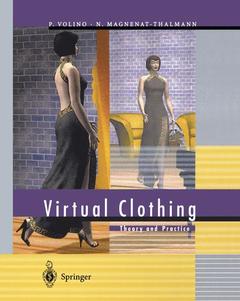Virtual Clothing, Softcover reprint of the original 1st ed. 2000 Theory and Practice
Auteurs : Volino Pascal, Magnenat-Thalmann Nadia

Starting with the beginnings in the mid 1980s and the basic foundations from the field of mechanics, the reader is gradually introduced to the subject. The text draws on a number of related fields such as computer graphics, algorithmics, computational geometry, simulation, modeling, animation, visualization, and virtual reality. The MIRACloth system, developed by the authors, is used as a case study for the results and techniques discussed. The book comes with a CD-ROM featuring dynamic demonstrations of 3D clothes and fashion shows. This is an indispensable text for anybody who wants an intelligent and readable book on virtual clothing.
The FIRST book on the topic
Combines theory and practice
Includes supplementary material: sn.pub/extras
Date de parution : 11-2012
Ouvrage de 283 p.
20.3x25.4 cm
Disponible chez l'éditeur (délai d'approvisionnement : 15 jours).
Prix indicatif 126,59 €
Ajouter au panierDate de parution : 01-2000
Ouvrage de 284 p.
20x24.5 cm


